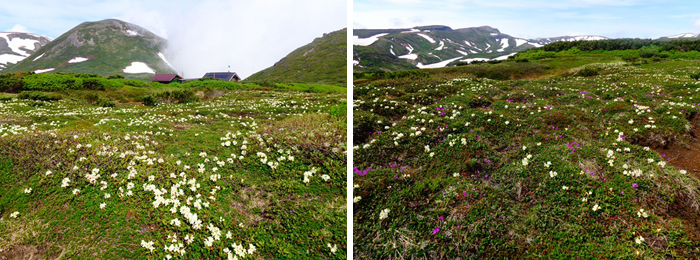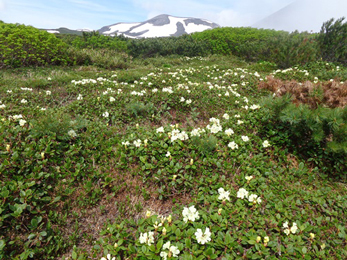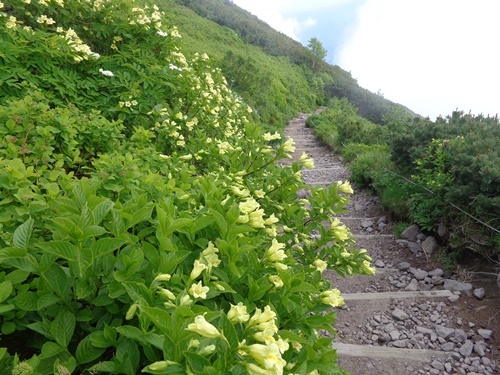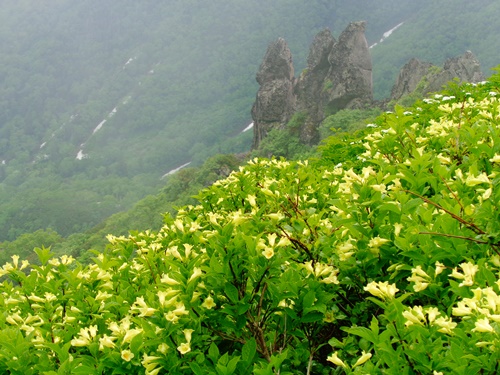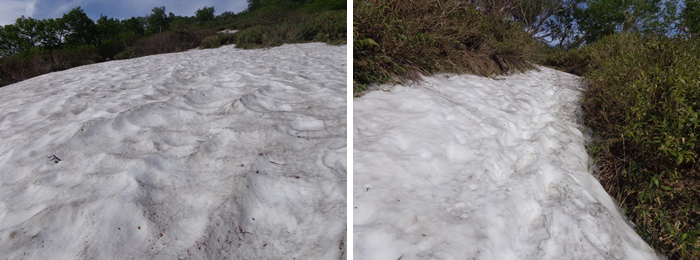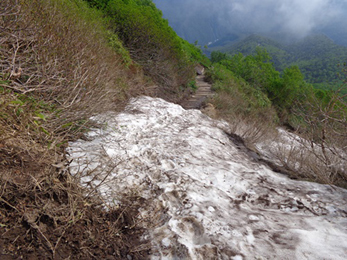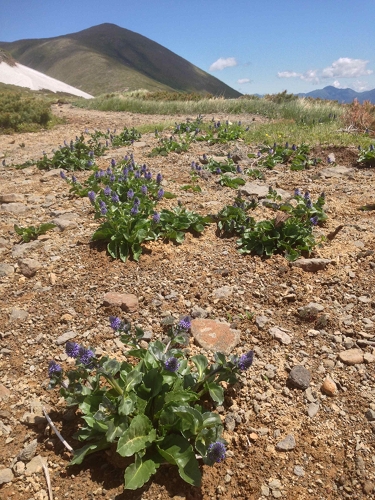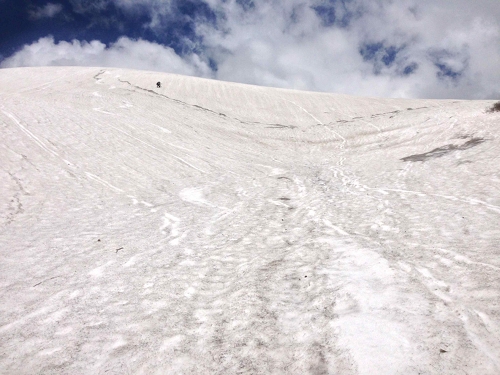The Rhododendron aureum, Sieversia pentapetala, and Primula cuneifolia var. cuneifolia flowers are popping open here and there near Ishimuro.
Although they cannot be described as “communities” yet, the number of flowers is increasing day by day.
The same is happening at Kumonotaira.
However, many snowy gorges still remain alongside the trail, so it will be a little longer before the flowers grow into communities there.
As I mentioned in a previous report, the snowy gorge below the Mt. Hokuchindake junction does not have the undulations normally seen this year. Moreover, even though the snow level at the Akaishi River is falling in more and more places, it is still possible to walk on the snow.
The weather has been extremely unsettled lately.
In particular, we have had wind, rain, and lightning in the afternoon hours.
Even today, there was lighting at the Mt. Kurodake peak from early in the day. Climbers should carefully check weather forecasts and bring all of the gear needed for safe climbing.
Photos: Near Ishimuro (left and center) and near Kumonotaira (right) Jun. 28
Although they cannot be described as “communities” yet, the number of flowers is increasing day by day.
The same is happening at Kumonotaira.
However, many snowy gorges still remain alongside the trail, so it will be a little longer before the flowers grow into communities there.
As I mentioned in a previous report, the snowy gorge below the Mt. Hokuchindake junction does not have the undulations normally seen this year. Moreover, even though the snow level at the Akaishi River is falling in more and more places, it is still possible to walk on the snow.
The weather has been extremely unsettled lately.
In particular, we have had wind, rain, and lightning in the afternoon hours.
Even today, there was lighting at the Mt. Kurodake peak from early in the day. Climbers should carefully check weather forecasts and bring all of the gear needed for safe climbing.
Photos: Near Ishimuro (left and center) and near Kumonotaira (right) Jun. 28
